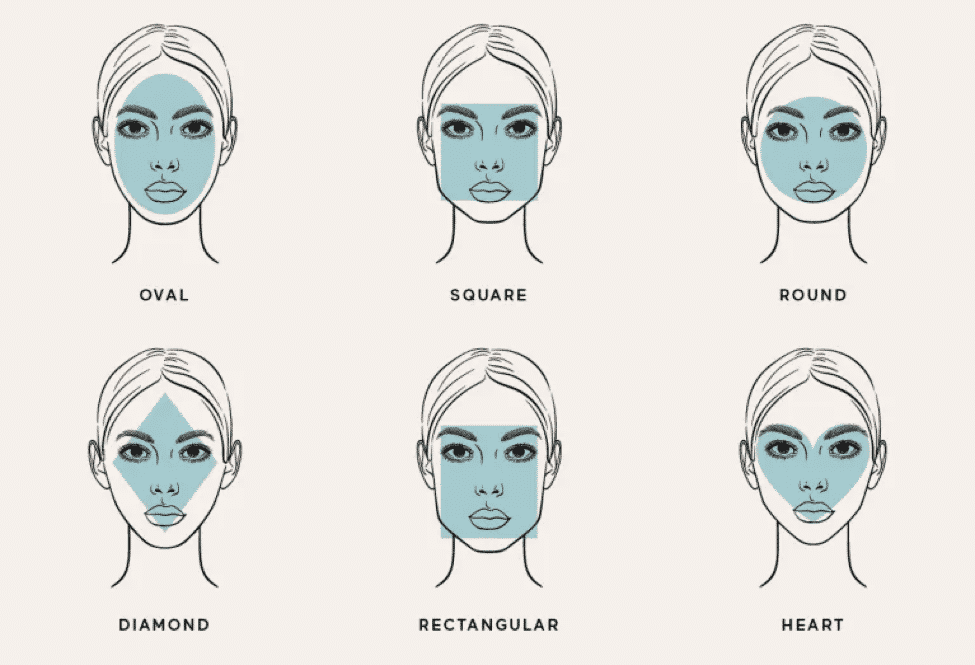As of 2020, there are over 4 billion adults in the world who wear glasses. Interestingly, more women wear glasses than men – with over 50% of all women wearing glasses, compared to just 42% of all men (NCBI). Not to mention nearly the entire adult population wears sunglasses too.
As the population ages, more people need some visionary aid. Whilst most people clearly opt for eyeglasses; contact lenses have become increasingly popular amongst younger generations. However, even they, ultimately revert back to eyeglasses – even if it’s only on a part-time basis.
With so many glasses wearers around the world and across different demographics including age and gender; it’s worth considering how many of these are getting the shape, style, size and fit of their eyeglasses frames right. With 75% of adults need some form of vision correction, with 64% of these 75% of adults wear glasses.
It’s difficult to believe that all of these glasses-wearers have hit the nail on the head when it comes to choosing the right pair that best fits their face shapes. Before delving into further details on flattering glasses for different face shapes, it pays to understand the importance of doing so.
The Importance of getting the right glasses frames
There are quite literally thousands of different styles to choose from – so finding the right pair is no easy task. Amongst other factors like convenience, cost and purpose; the most important factor to consider when it comes to choosing the perfect glasses is your face shape. Here’s why.
- Fit and comfort
Just as with the clothes, shoes, sports equipment and practically anything else you could adorn your body with; specific glasses frames are more compatible with specific shapes and sizes of faces. There is perhaps no greater discomfort than having a pair of glasses squeeze the head, ride up the bridge of the nose, or cause serious blind-spots from simply being too small for a person’s face.
Equally, a pair of glasses too large will result in serious discomfort. Without an adequate grip on the face, a wearer could be forced to hold their head in a rigid position to prevent their frames from falling down. The health implications of this are endless. Face shape, and size play a big role in maximising the comfortability of wearing glasses – an already burdening but imperative tool bestowed on the visually impaired.
- Accentuate or de-accentuate facial structure
Eyeglasses frame shapes can be used to either accentuate or de-accentuate your facial features. This is, of course, dependent on how each individual chooses to express their preferences. For instance, very round facial shapes will be reinforced by the addition of very round eyeglasses frames. To offset the roundness, rectangular glasses can help to lengthen and elongate the look of the face.
Likewise, the colour of the frames can work the same way. For example, the frame can either be the same or a contrasting colour to the skin tone, eye and hair colour. The degree to which you contrast or match your colouring will contribute to the expression of your personality.
- Save costs
Needless to say, the importance of getting the right glasses frames extends to your wallet. Taking the time to explore your options and understand your facial shape, should mean that you get it right the first time. Thereby, limiting the number of times you shop for a new pair. The average adult typically buys a new pair of glasses every three years. This can be extended when you still love the pair you own.
Which frames will suit you best based on your face shape?
Unless you’re in the 0.01% of the population who can wear basically anything – there have probably been times when you have placed a pair of glasses on your face and realised that they didn’t look quite right. It can be difficult to put your finger on the problem but it could be resolved by simply understanding your face shape.
As noted above, the size and fit of a pair of glasses can do one of two things: accentuate a desired feature, or de-accentuate a facial structure that you might wish to minimise the prominence of. With that in mind, what are the possible face shapes of which glasses have the power to alter?
Understanding face shapes
There are typically 6 main face shapes, with most people owning a combination of shapes. Since no one’s face is the perfect square, triangle or circle; the idea is to recognise the shape in which their own face would fit into to the nearest degree. To determine your face shape, you’ll need to examine three criteria.
- The widest part of your face – i.e. forehead, cheeks or jaw.
- Your jawline – i.e. round, pointy or square
- The length of your face – long or short
So, if the widest part of your face is your cheekbones – you probably have a round face. If it’s your forehead, you probably have a more oval face. A strong jawline is typically suggestive of a square or rectangle face shape. Those that come to a point usually indicate a heart-shaped face. Finally, oval faces are usually on the longer side when it comes to determining the length of the face.
A person can very easily teeter between two different face shapes. In fact, it’s most common, especially since some shapes aren’t too far off from one another. So, what are the face shapes?
Face shapes and their complementary glasses frames

Round face shape
Round faces are typically very symmetrical. They are determined by having an equal length and width, with a rounded jawline and chin. Cheekbones aren’t particularly pronounced in round faces and they tend to lack angles and edges. The goal and role of eyeglasses frames is to make the face appear longer and thinner. Therefore, one should look for angular, narrow frames that will lengthen the face at the high or mid-temples. This helps to create a longer profile. A clear and distinguished bridge will help to widen the eyes. Opt for glasses that are wider than they are deep, such as an octagonal shape.
Square face shape
The key to identifying a square-shaped face lies with the jawline. With a square face shape, the forehead, cheekbones and jaw will all be the same width but the jaw should have sharp angles to it. In effect, square faces are similar to round faces but will have more pronounced and wider jawlines. The sharp edges of a square face, means that the face will have minimal curves to it.
With this in mind, the goal is to make the face longer and soften the edges. Look for curvilinear, and narrow glasses frames that soften angles. Opt for glasses frames that are wider than the widest part of the face – narrow eyeglasses frames with more width than depth are an excellent choice for those with square faces.
Diamond face shape
In essence, diamond face shapes have a narrow forehead and a small chin. The cheekbones are also the widest part of the face and typically sit nice and high. Don’t get this face shape confused with the heart shape – since the forehead on a diamond face shape won’t be as wide as a heart-shaped face. The diamond is the rarest face shape and the goal is to highlight the eyes and bring out the cheekbones. Look for frames that have detailing or distinctive browlines. Rimless frames and cat eyes are both good options.
Heart-shaped face
A heart-shaped face will generally have a larger, wider forehead over anything else. The face progressively gets more angles towards the chin, finishing into a point. In many ways, the heart shape is similar to the round face shape but demonstrates a wider forehead. The aim here is to minimise the width of the upper part of the face. This can be done with frames that are wider at the bottom half of the frame.
Oval face shape
The terms oval and long are often used interchangeably since a long face is essentially just an elongated version of an oval. The most telling feature is that an oval face is longer than it is wide. The chin and jawline are typically rounded off in balanced proportions. The oval face is neither curvilinear nor angular.
For the purpose of these proportions, the goal and aim of any pair of glasses is to maintain the oval’s natural balance. In order to do so, look for glasses frames that are as wide as or wider than the broadest part of the face. Almond or walnut-shaped glasses frames that are neither too deep nor too narrow will avoid disrupting the facial balance.
Oblong face shape
The oblong face shape is typically longer than it is wide and is characterized by a long, straight cheek-line and sometimes a longer nose. Whilst similar to the oval face shape, the oblong is perhaps less balanced. The goal is to make the face appear shorter and more balanced.
The right glasses frames can do just that. Look for frames that have top-to-bottom depth such as rounder panto or P-3 shapes. The temples should be of contrasting colours or decorated as such in order to create the illusion of width to the face. Finally, a lower bridged frame can help to shorten the nose and restore balance.

